Myth: The higher percentage of an active ingredient is always better
Fact: You don’t need a big percentage to feel the effects. Some ingredients can create positive changes with a small concentration!
We’ve entered a new era of skincare, where brands are combatting to have the higher percentage on their products. Using it as a marketing tool to lure into buying with the impression that their product is better or more effective than the rest. But is that really the case? Let’s find out more.
Recommended Use Level
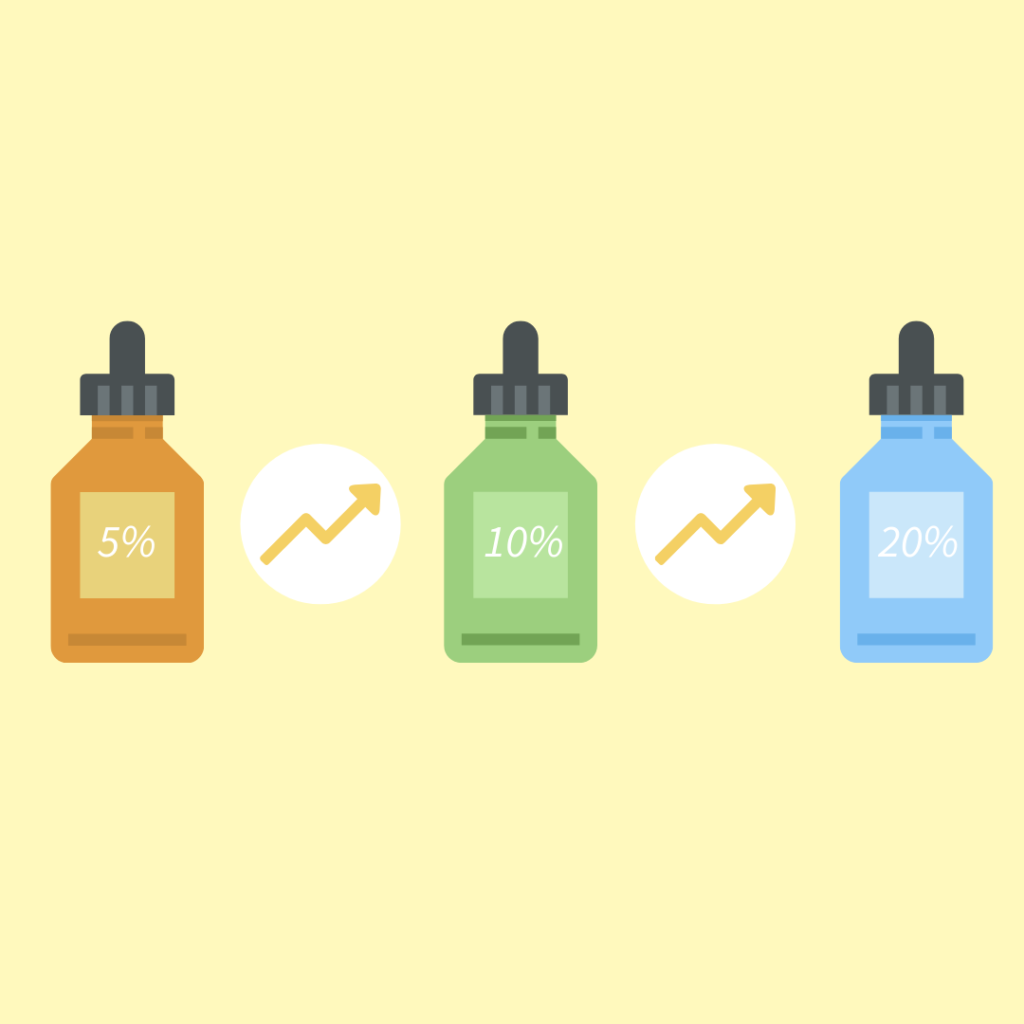
For every ingredient there is a “recommended use level.” This isn’t just a randomly selected number. The recommended use level is backed up by evidence, either in vitro or clinical studies, done by the manufacturers of the raw ingredients. Sometimes there can be several recommended use level depending on the results that particular product is trying to achieve. Whether or not the brand discloses the percentage is up to them, but since there’s a race for having higher percentages, many brands do disclose the amount and use a percentage higher than the recommended use level.
Not in the Top 5
There’s a misconception that active ingredients need to be in the top five listed on the ingredient label in order to be effective, but that’s not the case. Many ingredients don’t need to take up a majority of the formula to be effective at its job. For example:
- Antioxidants: Reservatrol (0.4%) or asthaxanthin (0.035%)
- Retinol (0.04% – 1%)
- Matrixyl peptides (2 – 3%)
- Vitamin C (5 – 20%)
Going under can lose the effectiveness, while going over can create adverse effects!
Different Percentage for Different Purpose
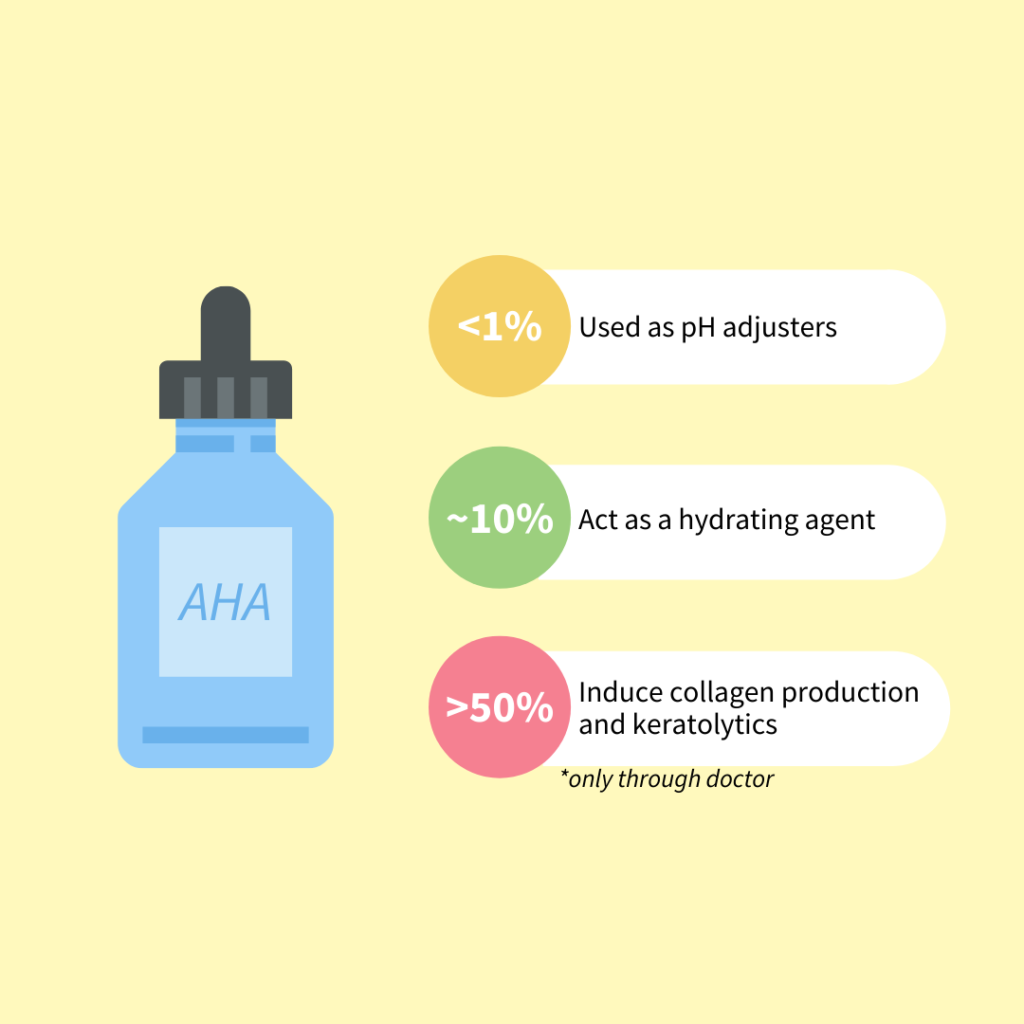
Depending on the percentage of an ingredient, it can actually serve a different purpose. For example, AHAs (alpha hydroxy acids):
- Less than 1% they are used as pH adjusters
- Around 10% they act as hydrating agents (humectants)
- More than 50% (only by doctor) they induce collagen production and keratolytics
So yes, AHAs below 1% won’t give you those “exfoliating” benefits, unless combined with other equivalent ingredients containing similar benefits, but depending on the percentage level it can truly shift the ingredient’s main purpose.
Is More Always Better?
Not always. As we’ve learned with skincare, adding more does not equal better. There are of course some exceptions, so let’s look into one. Niacinamide, a great ingredient for basically everything, but you can find this ingredient formulated at nearly any percentage. Reaching as high as 20%! Through evidence we see that:
- 2 – 4% can help with excessive sebum, acne, rosacea and atopic dermatitis (repair skin barrier).
- 4 – 5% helps with hyperpigmentation and melasma
- Higher percentages may be beneficial, but safety profile hasn’t been clearly shown
But then why spend more for a higher percentage when you can achieve the same benefits with a lower percentage? Instead, look into percentages that give benefits but with a better delivery system. Otherwise, you’re left with a higher percentage but it just sits on your skin. A good delivery system is key for getting those actives, despite the percentage, of where they need to be. Which is why you shouldn’t judge a product based solely on the percentage of active ingredients. It’s not a race, and more doesn’t always mean better!
Moderation is Key
You don’t need to jump to the highest percentage of an active to fix a skin concern, if anything this will only cause more issues. Sometimes having too much of something isn’t the best, especially when it comes to skincare. So moderate and keep active percentages at a level that gives your skin benefits.
Be Picky
Want to see the science behind your skincare? The Picky app breaks down the ingredient list for you, so you can see what’s a Picky Match for your skin type and concerns. If you’re looking for more skincare myths to bust, check out more Myth vs Fact articles here. Don’t forget to follow us on Instagram!
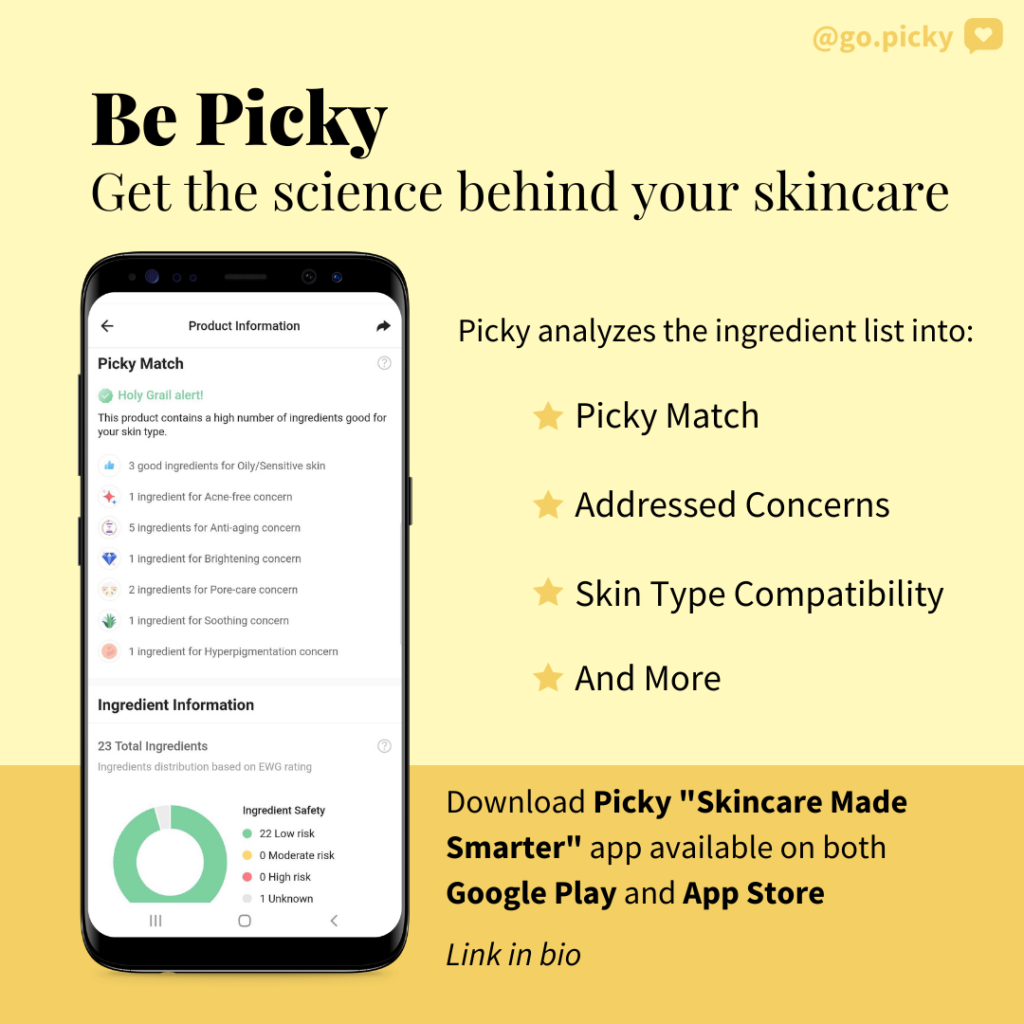

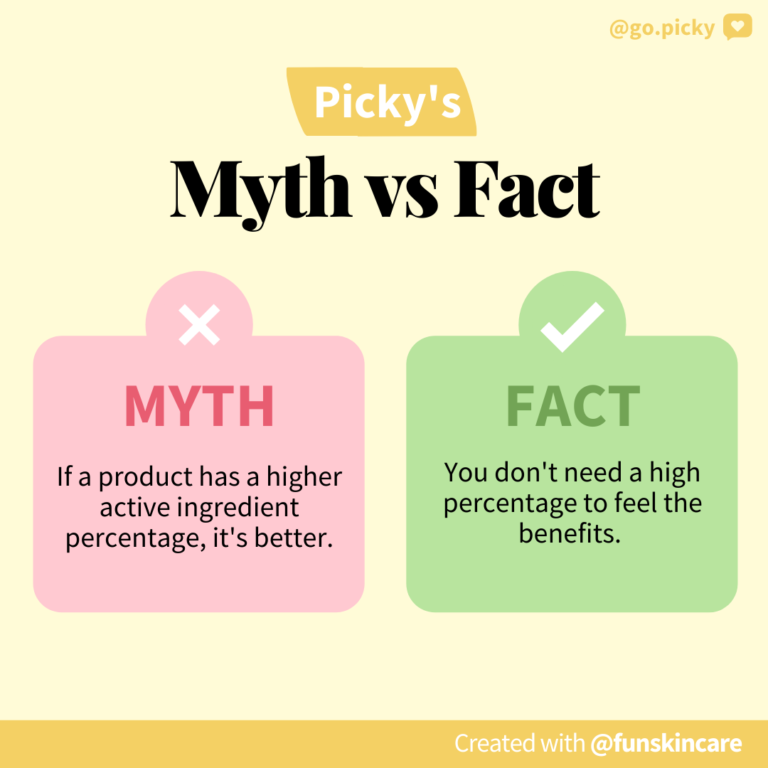














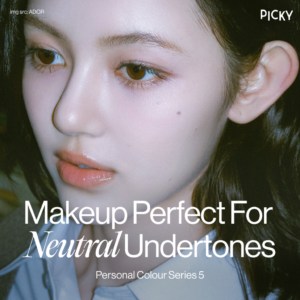


8 Responses
Yasss. I love an article talking about formulation. Pharmainfluencers would be proud
This is really informative thank you for sharing this.
I love that you are breaking it down like this!!! These are some of the biggest questions I get besides what can I use together.
😍😍😍😍
Thank you for this very informative blog!
So good to read articles like this, it’s hard to find such information out there
Good article😊
Super helpful article! I did not know that AHAs have different purposes at different levels, or the information on niacinamide. Awesome help.